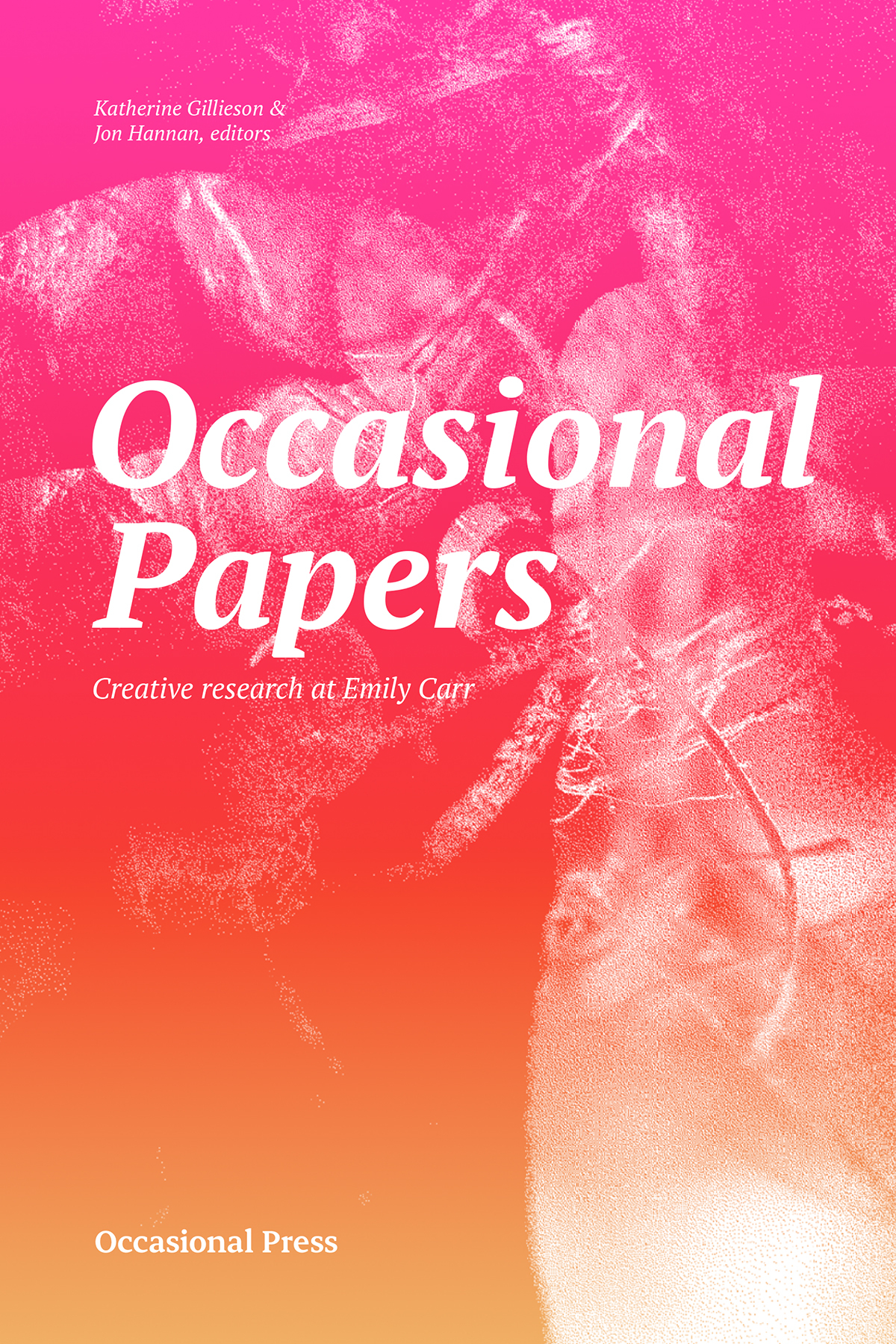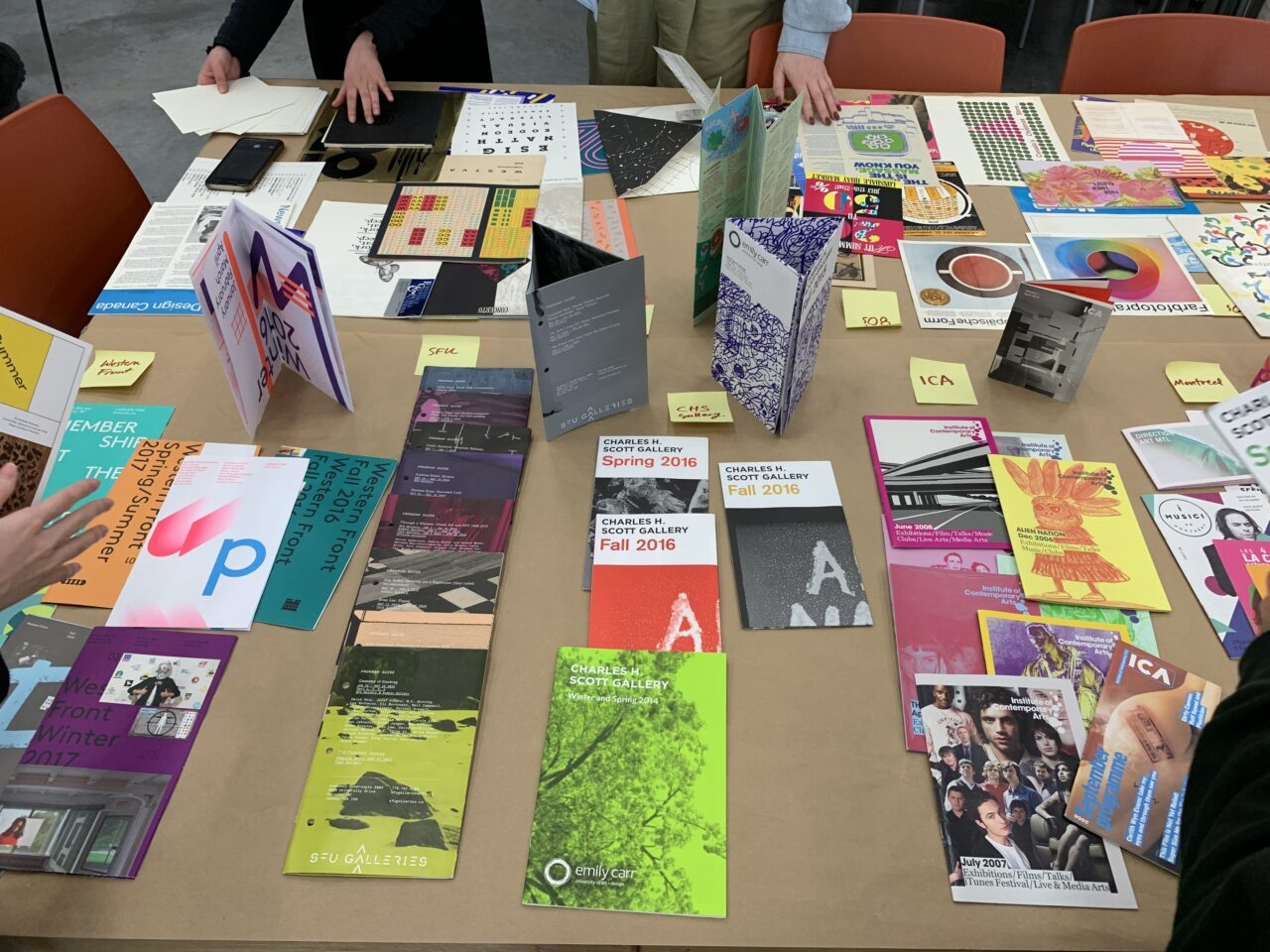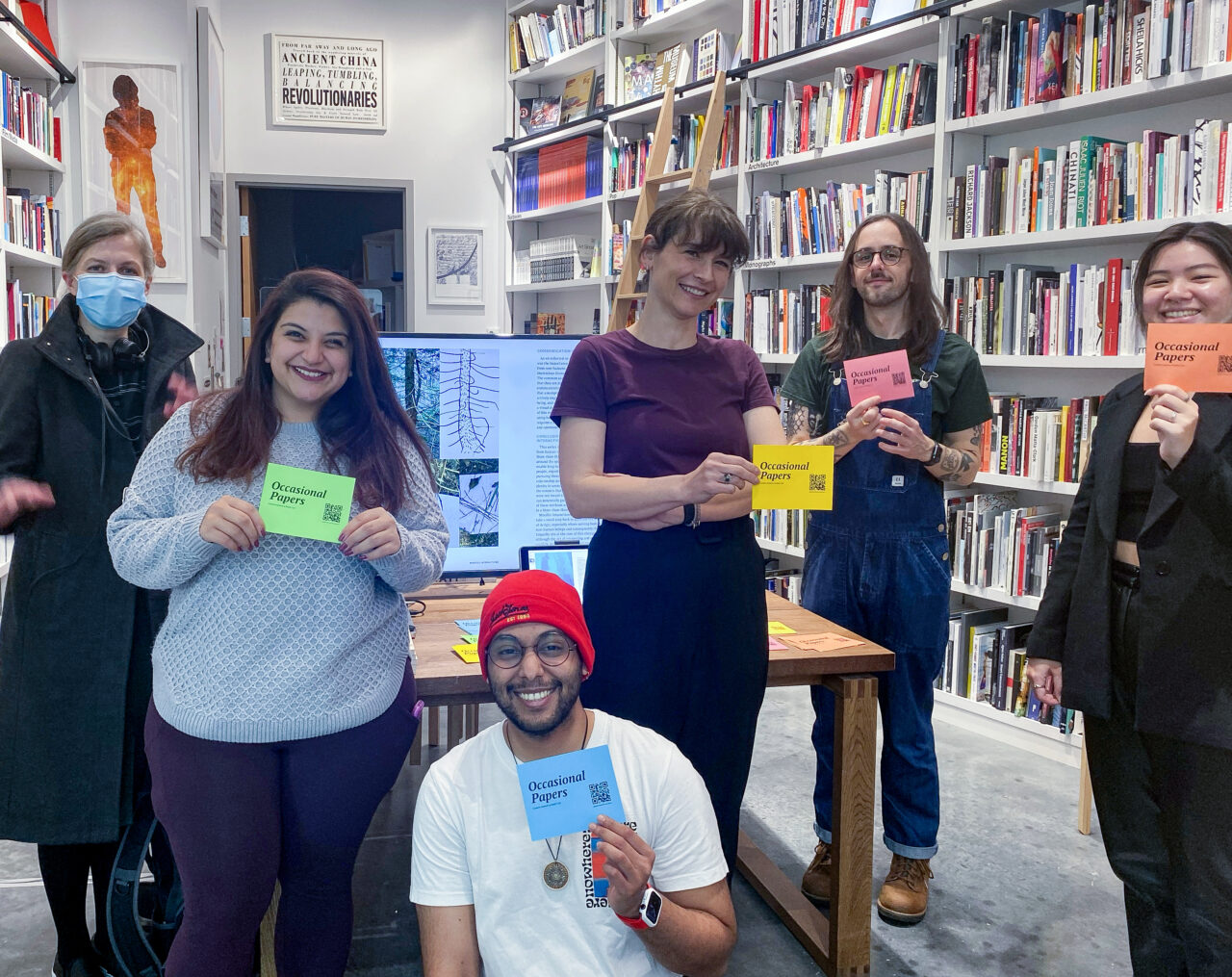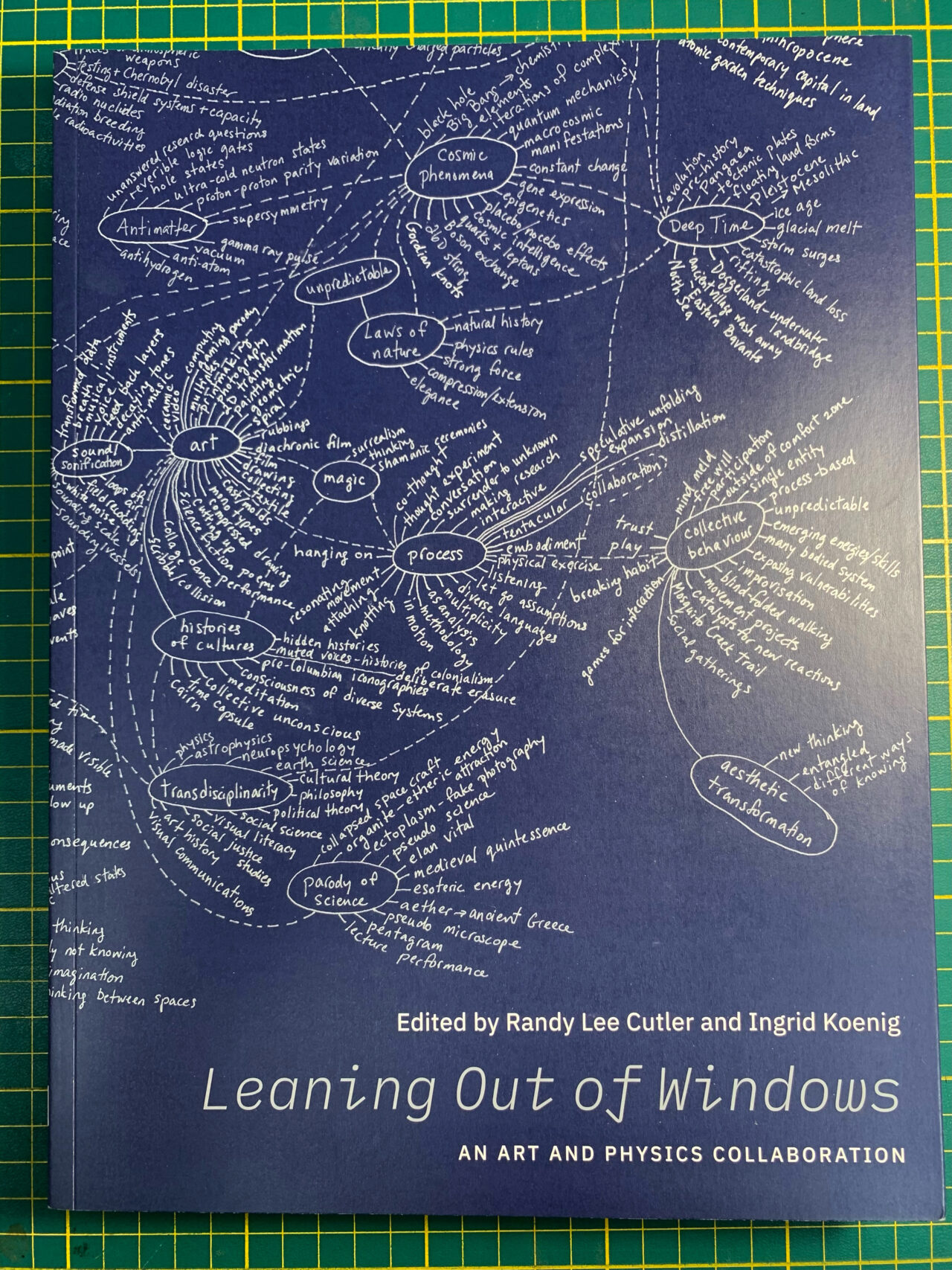Occasional Press Explores Publication Design as Practice-Based Research

Posted on | Updated
Led by designers and faculty members Katherine Gillieson and Jon Hannan, the nimble publishing platform showcases creative project work from students, faculty and alumni.
A publishing project led by designers and ECU faculty members Katherine Gillieson and Jon Hannan aims to showcase creative research from across Emily Carr University.
Occasional Press emerged partly from recognizing the diverse range of projects at ECU that go unpublished. As communication designers with first-hand experience in publishing, Jon and Katherine felt they could help reverse that trend.
“It’s clear there’s a lot of exceptional creative research and practice going on,” Katherine says. “Emily Carr currently has no in-house, academic university publisher. It makes sense to have an operation running within the school, taking advantage of Communication Design faculty’s knowledge in publishing and editorial design and the whole network surrounding that.”
But Katherine and Jon are also interested in “applied, impactful approaches to editorial design as a form of studio-based research.” Meaning Occasional Press not only solves a problem, it’s a “testing ground” for exploring new and creative avenues for publication and editorial design.

In March, 2023, the Occasional Press team ran an event called Ephemera Afternoon, in collaboration with COMD faculty member Gabe Wong, showcasing printed ephemera from multiple periods. (Image courtesy Occasional Press)
Publication as Social Practice
Katherine and Jon see publication design as a form of social practice that engages principles of sustainability and service design. It can also contribute to community-building by “highlighting pluriversal perspectives” at Emily Carr, they tell me. Pluriversal design deliberately works to account for diverse perspectives. The idea was first introduced by sociologist Arturo Escobar in his book Designs for the Pluriverse.
Occasional Press works out of the Graphic Research Unit at ECU, publishing through open-source forms of digital and print publication while building networks with the community.
“We’re asking: how might we develop new, accessible and responsive formats for publishing practice-based research in art and design? And how can the toolkit of publication design most effectively respond to this challenge?”
Projects are drawn from proposals submitted by ECU students, alums and faculty. Research assistants (RAs) hired from the ECU community help develop those projects. Master of Design students Diego Hernandez and Howsem Huang currently work as RAs. Past team members include Ruby Pang (BDes 2021), Leea Contractor (MDes 2023), Aamir Rangwalla (MDes 2023) and Isla Pedrana (MDes 2023).
With its broad pluriversal mandate, the Occasional Press builds its foundation on a capacity for nimbleness. This flexibility allows the platform to direct its resources uniquely for each project. It also prevents the need for projects to conform to any one publishing process.
“We take a decentralized approach, which has proven to be highly resilient,” Katherine says.
This decentralization is in large part a result of the central role RAs take in shaping each project, says Jon. They’ve also greatly influenced the scope and range of Occasional Press’s output. Their interests and abilities open up new possibilities for every undertaking.
“The projects we’re working on have hugely benefited from their input,” he says.
“The way we’re working now is different from last year because our projects are different and the collaborators are different,” Katherine adds.
Meanwhile, some projects bring grant funding with them. Others require a scrappier, all-hands-on-deck approach.
“Everybody brings a different set of conditions to every
project. How we undertake a project is determined by the project itself.
We aim to be responsive and collaborative every time we take on a new
project or activity.”

Occasional Press team members Isla Pedrada (MDes 2023), Leea Contractor (MDes 2023), Aamir Rangwalla (MDes 2023), Katherine Gillieson, Jon Hannan and Ruby Pang (BDes 2023) at READ Books at Emily Carr University celebrating Occassional Press' inaugural publication, Occasional Papers. (Image courtesy Occasional Press)
After the Launch
The launch of Occasional Papers in summer 2022 marked the platform’s first official publication. This open-access collection of creative research includes contributions from faculty, undergrad and graduate students, and alumni.
A limited-run print edition of a volume titled Practicing Neighbourly Responsibility quickly followed, developed in collaboration with ECU faculty Jean Chisholm and Laura Kozak, editors and contributors to the volume. The book documents an undergraduate course in Social Practice and Community Engagement offered in the summer of 2021 at Emily Carr, and its engagement with the practice of “place-based responsibility.” This practice involves turning to surrounding communities and ecology on unceded territory. Designed by faculty member Jean Chisholm (MDes 2020) and Meghna Mitra (MDes 2021) the volume is also available in digital format.
Occasional Press also worked in a supporting role for the print edition of Lheidli: Where the Two Rivers Meet. Lheidli traces a three-year project led by the Aboriginal Gathering Place and Health Design Lab at ECU. The project aimed to shift how health professionals view Indigenous health and to support Indigenous access to equitable care.
The team is pleased with the recent release of a flagship coffee-table compendium for the Leaning Out of Windows (LOoW) project, co-published with Vancouver publisher Figure1. Working on the compilation of artwork, conversation, field notes, and written pieces was a monumental undertaking, says Katherine. The SHRCC-funded research project was led by ECU faculty Randy Lee Cutler and Ingrid Koenig. ECU faculty member Robin Mitchell Cranfield joined the team to design the volume.
“They’re incredibly personable and generous,” Katherine says of Figure 1. “To be able to piggyback on their connections to different specialized roles in industry is invaluable for a small press.”
In April, Katherine spoke about the press as part of the Applying Education in a Complex World conference in Toronto. Showcasing publication as practice-based research was also an opportunity to articulate the press’ pluriversal values, its role in building networks in and around Emily Carr, and the power of publication design to contribute to cross-disciplinary dialogue and collaboration.
The OP team also ran an event in March called Ephemera Afternoon, in collaboration with COMD faculty member Gabe Wong, showcasing printed ephemera from multiple periods.
“The event was a show-and-tell for people interested in
material culture like DIY graphics, ephemera and print-culture history”
Katherine tells me.

Occasional Press recently released a flagship coffee-table compendium for the Leaning Out of Windows (LOoW) project, co-published with Vancouver publisher Figure1. (Image courtesy Occasional Press)
Breaking Open Boundaries
Ultimately, the future is wide open for Occasional Press. Katherine and Jon simply want to support a broader awareness of the vast array of creative research happening at ECU.
“Anything is possible,” Katherine says. “We often talk about publication in terms of its many constraints. But the project is about breaking open those boundaries. Tearing them down or just ignoring them completely and centering the work itself.”
Occasional Press was founded with support from an Ian Gillespie Design Research Grant. Visit Occasional Press online to learn more about their work.
Download a free digital copy of Lheidli via the Health Design Lab. Free digital copies of Occasional Papers and Practicing Neighbourly Responsibility are also available for download.
Visit ECU’s website to learn more about studying Communication Design at Emily Carr.